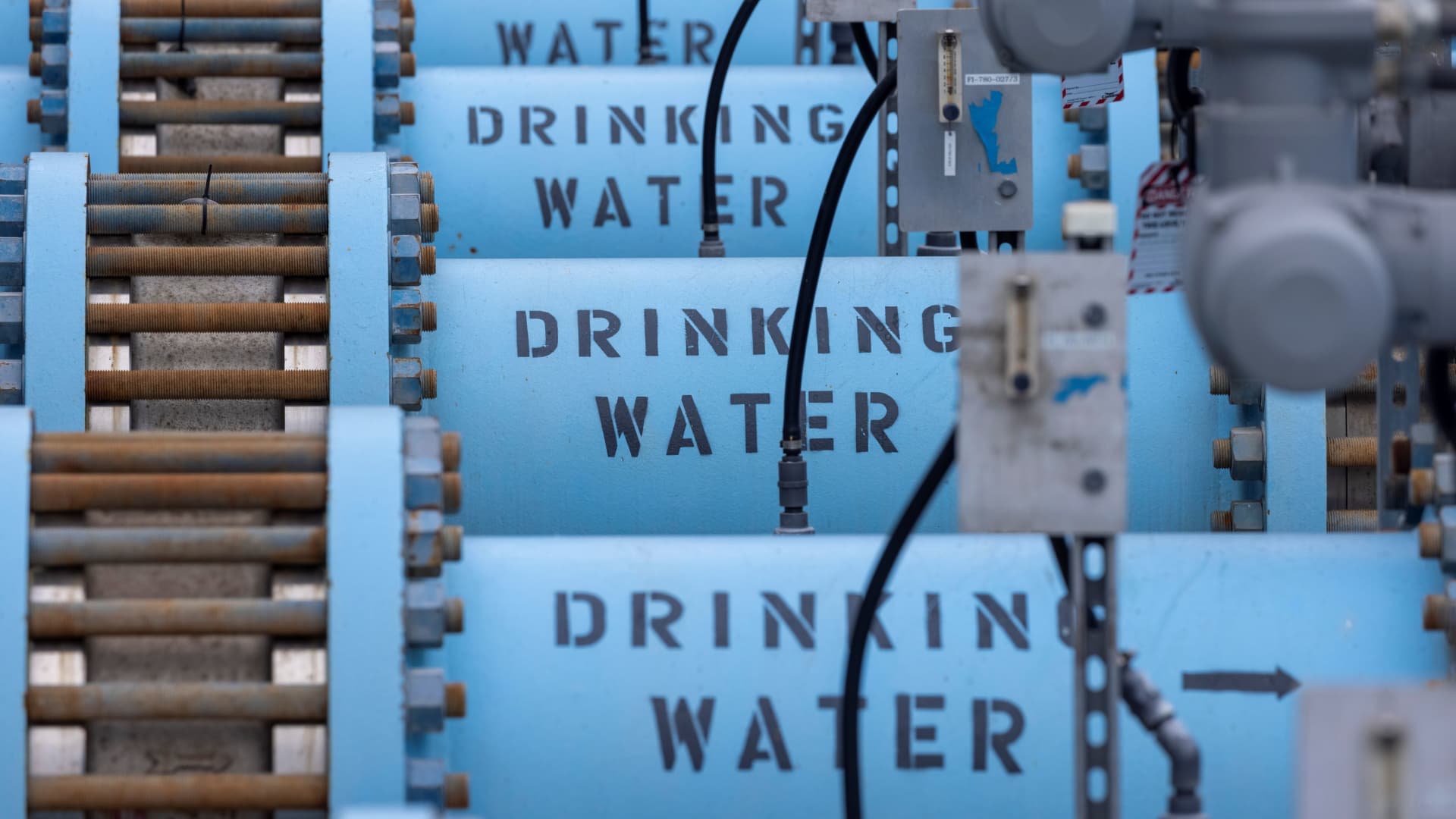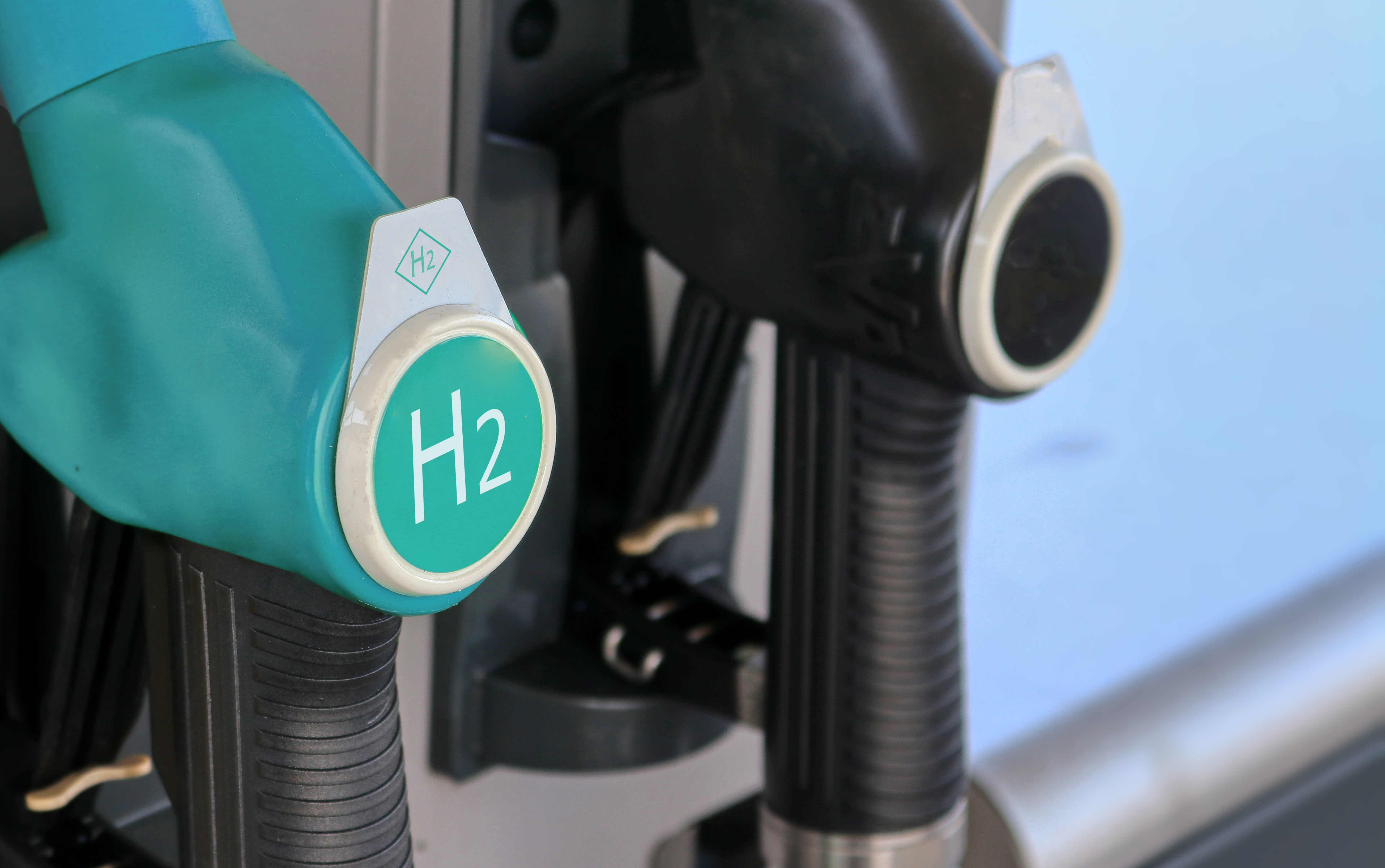States dependent on the drought-stricken Colorado River are increasingly looking toward desalination as a way to fix the river’s deficit and boost water supplies across the western U.S.
The search for alternative ways to source water comes as federal officials continue to impose mandatory water cuts for states that draw from the Colorado River, which supplies water and power for more than 40 million people.
related investing news
Desalination (or desalinization) is a complicated process that involves filtering out salt and bacteria content from ocean water to produce safe drinking water to the tap. While there are more than a dozen desalination plants in the U.S., mostly in California, existing plants don’t have the capacity to replace the amount of water the Colorado River is losing.
“Ocean water desalination has tremendous allure,” said Robert Glennon, a professor emeritus of law and water policy scholar at the University of Arizona. “The thought is that if we can just get the salt out of the water, everything can be fixed. But it’s a kind of siren song that will turn bad.”
Desalination plants are costly to operate, require enormous amounts of energy and are difficult to manage in an environmentally friendly way, according to water policy experts.
The debate over whether desalination could be a solution for the drying Colorado River comes as a historic megadrought grips the western U.S., generating the driest two decades in the region in at least 1,200 years. Water levels in the country’s two largest reservoirs, Lake Mead and Lake Powell, have hit their lowest levels on record.
The Biden administration has urged seven states in the Colorado River Basin to save between 2 million and 4 million acre feet of water, or up to a third of the river’s average flow. But water managers say that savings will need to be much more drastic as drought conditions worsen in the basin.
Kathryn Sorensen, who directs research at the Kyl Center for Water Policy at Arizona State University, said that while there’s been some major progress on water conservation across the West, the Colorado River is severely overallocated and the low reservoir levels are “extremely problematic.”
“We have been taking more water from the river than Mother Nature can really provide,” Sorensen said. “The river is a super important resource for all of us.”
The cost of water is high
Since desalination is a drought-resistant process, some have argued that states with such facilities could make themselves less dependent on water from the Colorado River. But the cost of desalination is high compared to the cost of imported river water and the process requires a great deal of energy to separate salts and other dissolved solids from water.
Large-scale plants require “tens of megawatts” to operate, according to the Energy Department, and energy consumption is the largest component of the operational expenditures of desalination, comprising about 36% of the total operational expenditures.
For example, the Carlsbad desalination plant in San Diego, California requires about 35 megawatts of electricity to operate. (By comparison, 1 megawatt is enough energy to operate a small town and 1,000 megawatts is enough to power a midsize city). The plant produces an average daily flow of 50 million gallons, only about 10% of the total drinking water needed by San Diego.
The cost of desalinated water at Carlsbad is estimated at $2,725 an acre-foot, according to a recent analysis by environmental economist Michael Hanemann of Arizona State University. That’s significantly more than the amount the San Diego County Water Authority pays for water sourced from the Colorado River and the Sacramento San Joaquin River Delta. Last year, the Water Authority proposed increasing its rate to $1,579 per acre-foot for untreated water in 2023.
“Desalination technology has improved greatly and it’s now remotely plausible to do,” said Jay Lund, co-director of the Watershed Sciences Center at the University of California, Davis. “But it’s only plausible if you’re willing to pay a lot of money.”
Water policy experts have also long debated the possibility of taking water from the Sea of Cortez in Mexico, the nearest sea to Arizona. In fact, Arizona officials in December voted to advance the study of a $5 billion project led by an Israeli company to build a plant to desalinate seawater in Mexico and transport it in a pipeline that would cross through the Organ Pipe Cactus National Monument.
The company leading that project said it would deliver up to 1 million acre-feet of water to Arizona, roughly the amount that the central and southern part of the state used from the Colorado River in 2022. The first phase of the plan would be a single pipeline that would transport roughly 300,000 acre-feet of water to Arizona, with future pipes supplying up to 1 million acre-feet.
If the desalinated water were to cost between $2,000 and $3,000 an acre foot for the Mexico plant, then the cost could potentially total up to nearly $1 billion each year for 300,000 acre-feet of water. And the cost could reach nearly $3 billion per year for 1 million acre-feet of water.
The environmental costs to desalination
There are also environmental costs to desalination. In addition to the greenhouse gases emissions produced from the large amount of energy needed to operate, the process leaves behind leftover brine, or concentrated salt water, which can raise the salinity of seawater and damage local marine systems and water quality as a result.
Brine can contain toxic metals such as mercury, cobalt, copper, iron, zinc and and nickel, as well as pesticides and acids that cause irrevocable changes to the environment.
“It’s difficult to bring desalination projects to scale because desalination is extremely expensive and there are real problems disposing with the brine that’s leftover,” Sorensen said.
One study published in the journal ScienceDirect found that brine volumes are greater than most industry estimates, comprising on average a gallon and a half for each gallon of fresh water produced. The authors urged brine management strategies that limit the negative environmental impacts and reduce the economic cost of disposal.
However, the most widespread current practice is to dump the leftover brine back into the ocean, which has led to the death of fish populations and corals as well as damage to seagrasses and fish larvae.
California regulators last year rejected a $1.4 billion desalination plant in Huntington Beach, citing not only the costs of the water but the hazards to marine life and risks associated with sea level rise and flooding.
Desalination will be useful in some areas of the country, especially as operating costs come down and more research is done on brine disposal. But water policy experts have suggested alternatives that are currently less expensive and energy-intensive and don’t pose environmental hazards.
Lund said that fallowing lower value agriculture is a cheaper and better alternative from a national and state perspective, since agriculture uses approximately 80% of the Colorado River’s water. “It’s the cheapest and most sustainable way to bring the system back into balance,” Lund said.
Reusing wastewater, conserving water and encouraging the reallocation of water are other sustainable solutions to water shortages that should take priority over desalination, Glennon said.
“Desalination is not a silver bullet. There are immense challenges,” Glennon said. “We can do it, there’s no doubt about that — but it isn’t the only option.”


